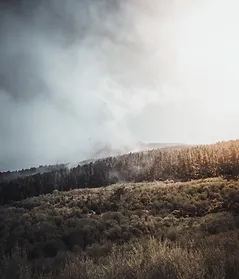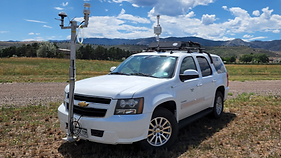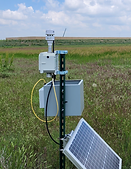Smoke Ready Communities
Protecting our Community from Wildfire Smoke
Project Background
Wildfire smoke can seriously affect our health, causing emergency room visits and hospital stays by exacerbating asthma and COPD. Climate change will increase wildfires and the number of people exposed to smoke.
To tackle this, we need two big things:
- Easy-to-Understand Info: We need simple tips on how access information about the presence of wildfire smoke and what that means for health.
- Prepare Our Community: We need to co-develop decision frameworks that can be used to make decisions when there’s smoke in the air.
Let’s work together to make our community healthier and ready to face the challenges of wildfire smoke.

Project Objectives
Measure and share smoke information to communicate air quality
We are adding to measurements of fine particulate matter. Particulate matter is a major air pollutant in smoke. From here, we are helping design communication strategies and actions to stay healthy.
Enhancing Air Quality Info for Your Healthier Tomorrow
We share useful air quality information that helps you take action. We did this by chatting with leaders and your neighbors to figure out the best ways to share this important info.
Building Awareness and Action to Create Smoke-Ready Communities
We are continuously iterating ways to share information to make sure it’s helpful for you and everyone in your community. We want to make sure the info we provide is practical.
Enhancing Air Toxics Monitoring and Air Quality Education
Improving Air Quality for Everyone in Colorado's Northern Front Range
Project Background
The North Front Range of Colorado is growing quickly and industrial sources of air toxics are abutting places where we live, work and learn. Existing monitoring networks might not be enough to assess potential air quality issues. Climate change is making these issues worse, disproportionately affecting Latinx residents, children, individuals with health conditions like asthma, diabetes, and those lacking adequate health coverage.
This project aims to build a responsive capacity to monitor air toxics. We serve everyone, with a special focus on groups who have historically not been involved in air pollution monitoring and decision making. We aim to aid in the understanding of air pollution using storytelling and art. Events and workshops help teach and empower people to be a part of important conversations about the rules and policies that affect the air we breathe.


Project Objectives
Form an Air Quality Monitoring Advisory Committee (AQ-MAC)
An Air Quality Monitoring Advisory Committee (AQ-MAC) is helping our team decide which places need additional monitoring for air toxics. They also serve as a connection between this project and community members.
The team is made up of residents, community leaders, and air quality professionals from Northern Colorado.
*** Our Air Ready team is looking for volunteers to serve on the AQ-MAC! If you think you would be a great fit for this advisory group, submit an application by clicking HERE! The next membership cycle starts in January 2025. ***
Air Toxics Monitoring
We’ll apply CSU’s expertise in checking air quality, using tools we already have to measure the air. With the AQ-MAC we’ll concentrate on locations where houses and busy buildings are close to oil and gas platforms. We’ll also drive around to find areas within neighborhoods that may be emitting pollutants. These strategies will help up keep and eye on any hidden problems that could make the air worse.
Air Quality Education
Using storytelling and art, we aim to increase understanding of the sources of air pollution, how air pollution affects health, where to find information, and how to talk to decision-makers.
